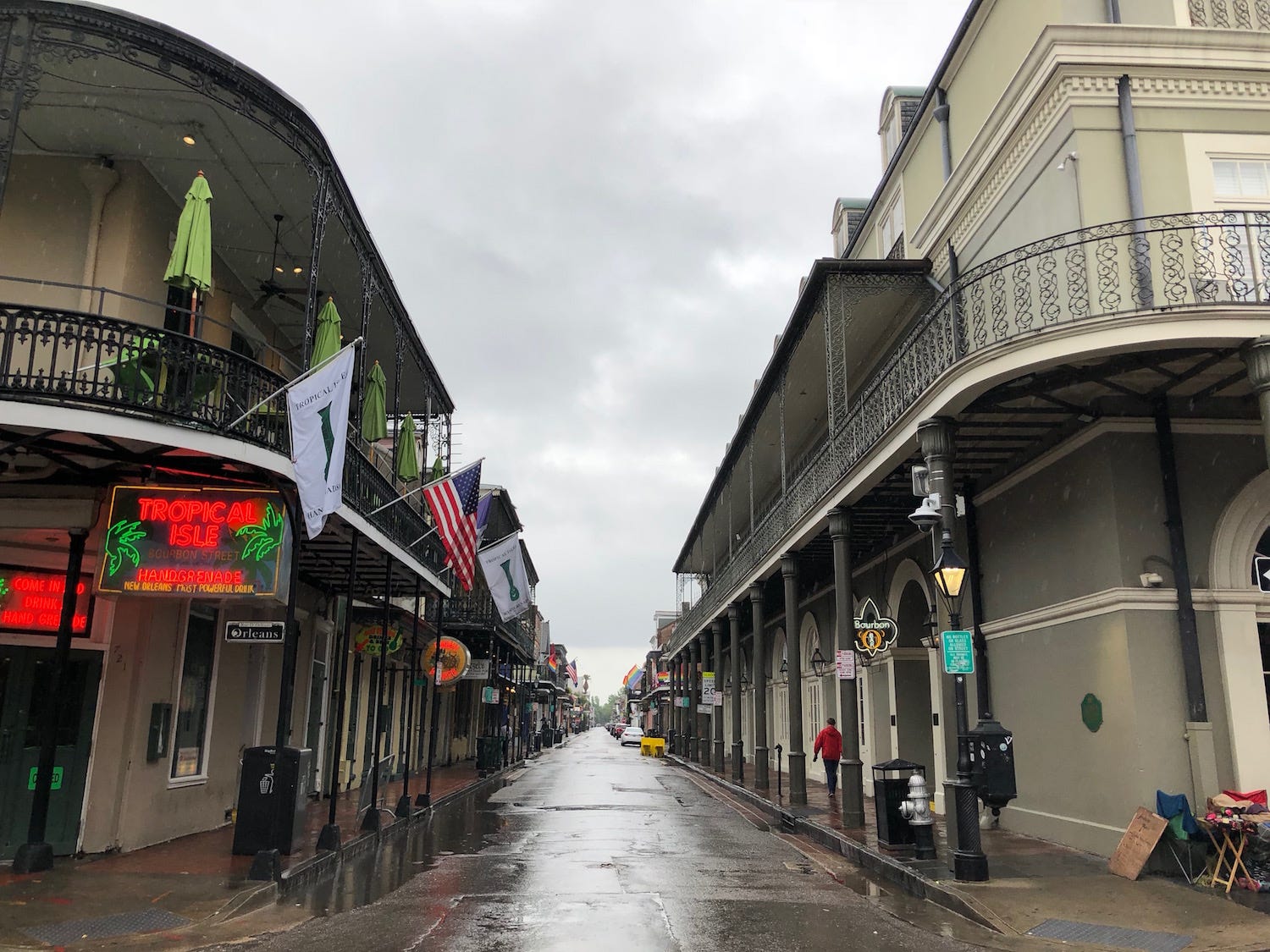
Horror fans descended upon one of the United States’ most haunted cities this past weekend in anticipation of facing more than a few frights at the Overlook Film Festival 2018.
On my flight to New Orleans last week, I knew something horrifying awaited me there. No, it wasn’t the foul stench of Bourbon Street sludge left over from too much booze and partying (though there was plenty of that). Rather, it was the promise of becoming fully immersed in nonstop terror from the moment I checked in to the Overlook Film Festival.
Despite its cinema-oriented name, Overlook has quickly established itself as more than merely a film festival, also incorporating a curated sampling of unique immersive experiences, designed to shock audiences both on and off the big screen throughout the 3-night event.
“I think that this festival exists so that weirdos can feel at home, among many other reasons,” said Landon Zakheim, Festival Co-Director. “I think everybody who works on this festival is very passionate about it and it’s a labor of love for us because these experiences are all very important to us. We do think it’s very important to have a little weirdness around. We like to embrace the strange, the unusual — that’s kind of the whole purpose of this festival.”
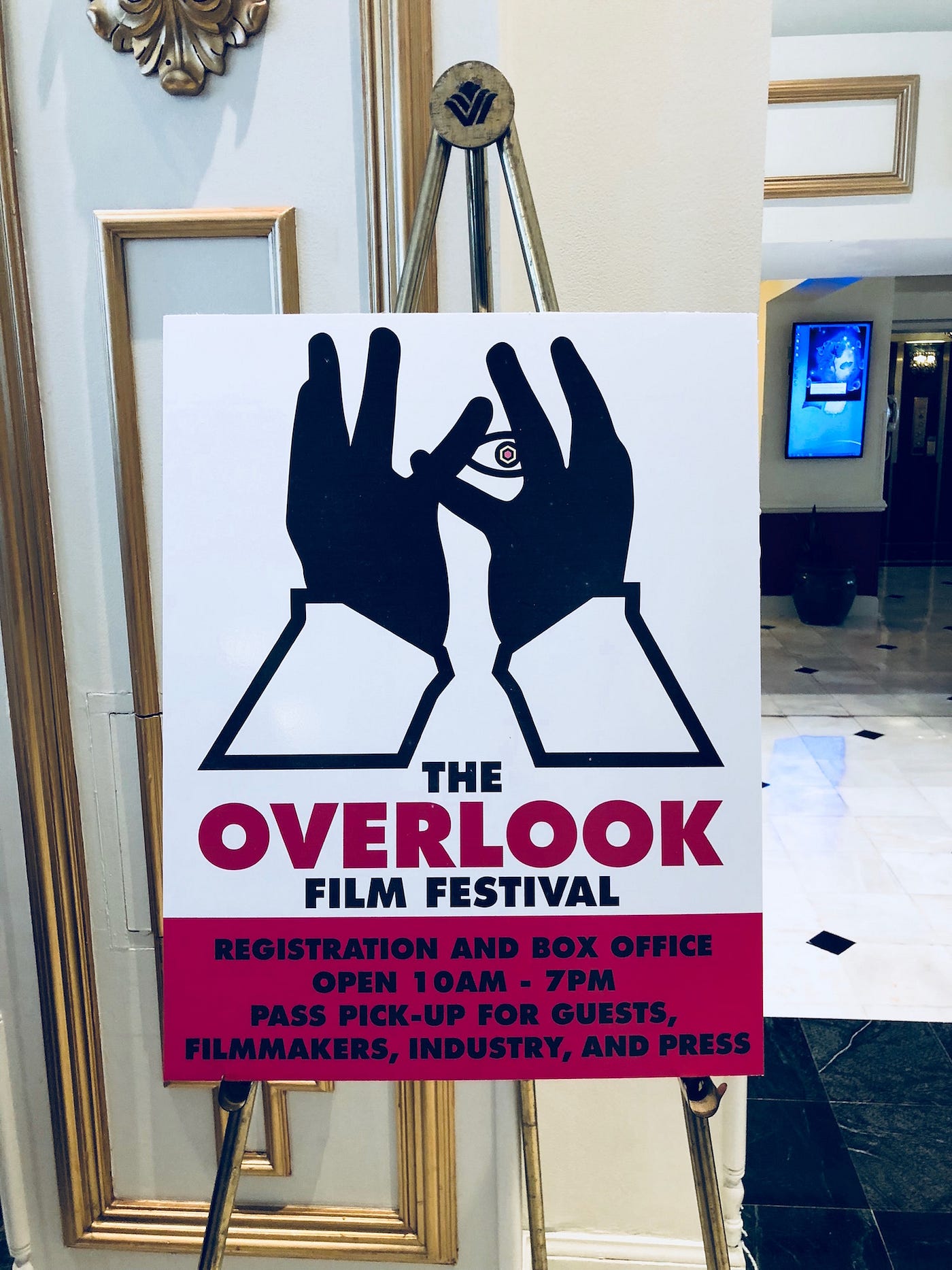
Across live actor-driven experiences, virtual reality, insightful panel discussions, and a multi-day city-wide game, the world of immersive horror took as big of a spotlight as the films the festival showcased. While some attendees arrived excited to see an early screening of the Sundance hit Hereditary — which absolutely lived up to the much-deserved hype it received — many others merely squeezed in a movie or two while hopping between the many hours of immersive entertainment Overlook presented.
Unlike past incarnations of this festival, which were set in relatively secluded locations, the city of New Orleans is the event’s new home, likely for the foreseeable future, which gave attendees a chance to explore far beyond the reaches of the Bourbon Orleans Hotel, which served as home base for the festival. Film screenings took place 10–20 minute walks away at two different movie theaters while immersive experiences spanned the entire French Quarter and beyond, allowing participants to soak in the sights, sounds, and smells of the city while walking from place to place. The event itself surprisingly did not take advantage of New Orleans’ well-known history as a tremendously haunted city, aside from partnering with one of the city’s less-than-scary ghost tours. Beyond that it was largely left up to attendees to seek out and discover the city’s cemeteries, mansions, and other haunted hot spots if they chose to do so.
But contained within the festival’s programming was plenty of scheduled horror-inspired entertainment that allowed those who were less inclined to venture out on their own a chance to easily fill their weekend with a variety of fun outside the theaters.
Those bits of curated entertainment are detailed and reviewed below as an overview of Overlook’s immersive track. (And be sure to keep an eye on NoPro this week for more in-depth video interviews with many of the talented artists and creators at the event.)
LIVE EXPERIENCES
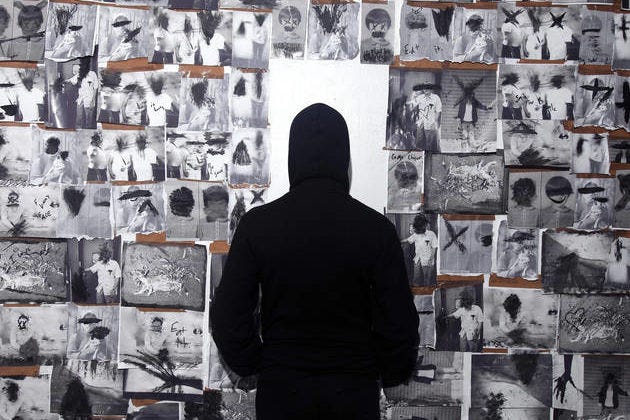
Blackout: Box — Ten years ago, Blackout redefined horror experiences, essentially inventing what we now know as “extreme” horror events, which are something altogether different from traditional haunted houses.
Today, Blackout continues to set the gold standard for these types of events, but now with its creators more frequently stepping out of the fog and into the spotlight.
The specific new Blackout show that debuted at Overlook this year is under strict embargo, as creators Josh Randall and Kris Thor used the festival as a workshop to test out and play with the new offering. As such, no details of what happened during this show nor any kind of review of the experience will be published here.
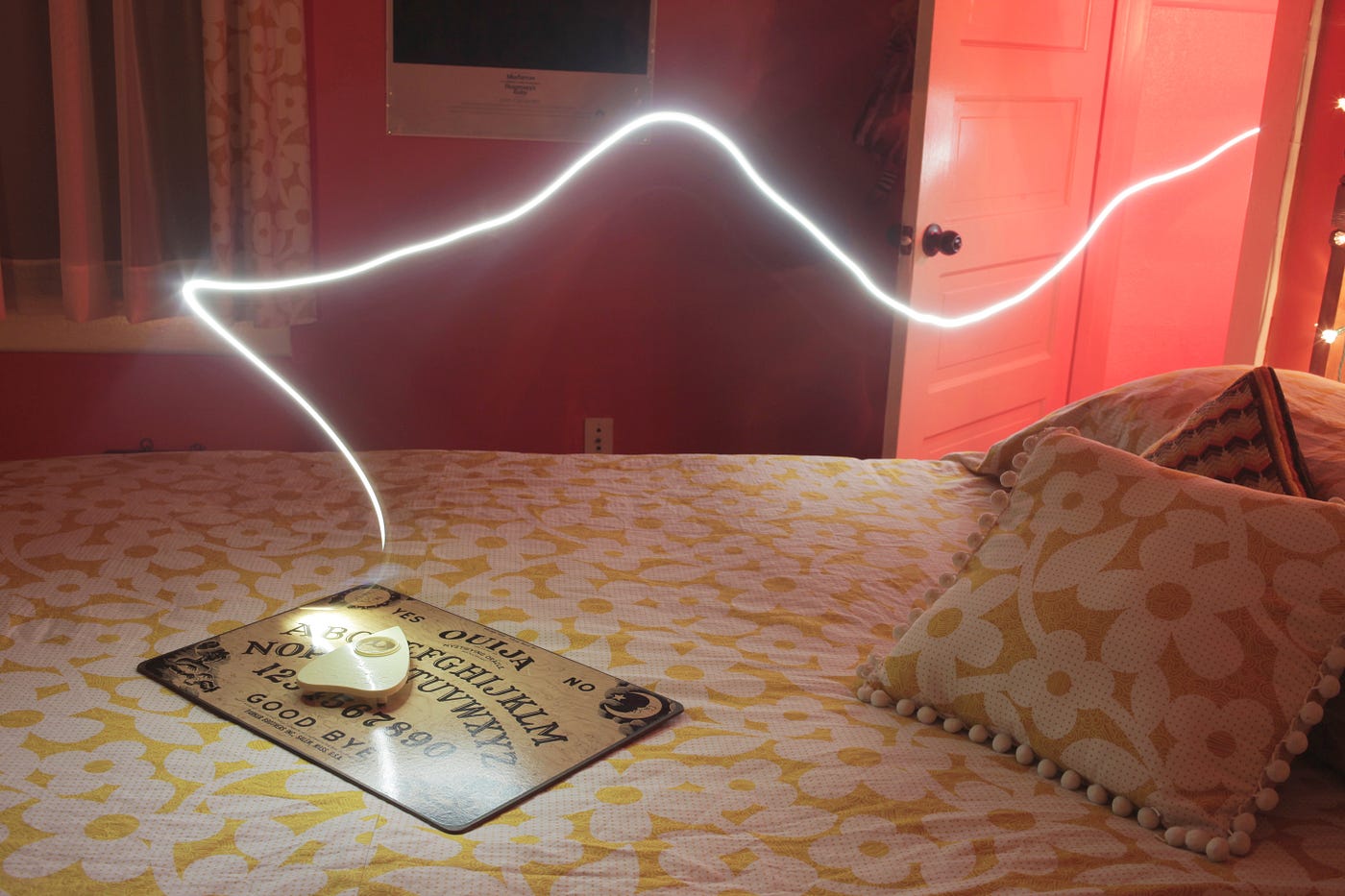
In Another Room — E3W Productions caught the attention of the Overlook Film Festival with their first foray into the immersive theater world, a show called In Another Room that ran last year. That intimate and emotional ghost story unfolded across a series of vignettes scattered throughout the creators’ own house, turned into an elaborately detailed theatrical set. For Overlook, an excerpt from that work was set inside one of the Bourbon Orleans Hotel’s rooms.
The lead-up to stepping inside the bedroom was a perfect scene setter, rapidly following a storyteller from the hotel lobby, up two flights of stairs, and down winding empty hallways while learning of the horrific details of multiple deaths that had occurred within the hotel, handed tattered case files to peruse along the way. The rapid pace of the walk combined with the onslaught of information from the storyteller and the intentionally difficult to decipher files that were snatched away all too quickly immediately created perfectly unsettling mood. Then a handoff was made at the end of one final long hallway, giving participants (up to 3 at a time) a keycard to access the haunted Room 344 on their own.
The room itself was beautifully transformed into an idealized version of a ’70s bedroom, barely resembling the hotel room it actually was. Complete with theatrical lighting and sound cues, the show played out over roughly 10–15 minutes. The ghost story that ensued was never frightening, but rather quite sad, a tale of a woman who is haunted by her future self, warned of her inevitable demise. Across the tale, participants get to know the young woman who eagerly invites them to join her on the bed to see if they can contact any spirits by way of a Ouiji board. Her bubbly spirit (pun intended) was offset by the much more malign appearance of the ghost of an older woman who whispered into participants ears as the Ouiji board spelled out her replies. Tension rose as the story progressed, ultimately placing participants in the room as the haunted history of the hotel played out before them, watching as one of those fabled deaths occurred — a hanging in the closet, just out of view.
The experience’s simple but intimate storytelling backed by lighting and sound moments created a wholly rewarding experience that made participants feel connected to at least one of the spirits of the haunted hotel — and left them highly entertained.
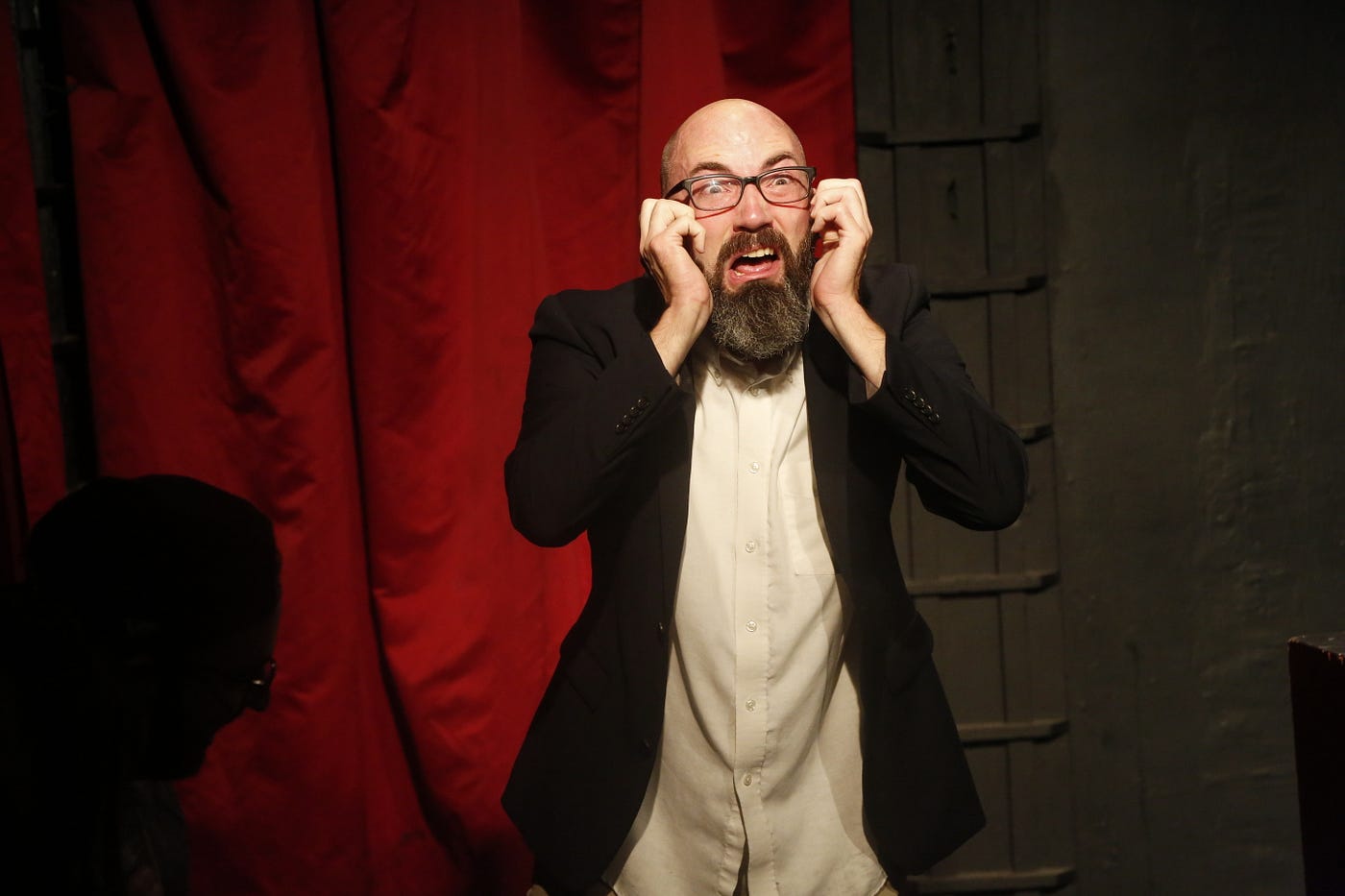
The Pumpkin Pie Show: One-on-Ones — What happens when you take a delightfully talented (and somewhat twisted) actor/writer who’s used to performing in front of packed theaters and give him an opportunity to entertain just one person at a time? Pure macabre magic. Sitting down face-to-face with Clay McLeod Chapman alone on stage in New Orleans’ Le Petite Theater as he transforms in the span of 15 minutes from the nicest guy at the festival to a monster who may-or-may-not have just murdered his own daughter is a stunningly eerie sight to see. While not your traditional immersive show, he credits the effectiveness of his performance to the subtle give-and-take he achieves with the onlooker, who isn’t meant to offer anything and yet is completely participatory simply by their natural reactions.
Clay McLeod Chapman: “If you spin a good yarn, your audience — regardless of how many people it is — their suspension of disbelief will kind of kick in and you can be anywhere. I don’t need a stage. I don’t need a costume or set or makeup or any of these things. If you tell a good story and you tell it well and the persona of whatever the character is, whoever that person is, if those things come across and you make an earnest connection to your audience, they will be willing to meet you halfway. […] There’s something to be said about a narrative that unfolds that you as the reader or the audience member feel almost entrapped. That whoever this character was at the beginning of the story, you suddenly have this adjustment or evolution of your understanding of who that character is. It’s the unreliable narrator.”
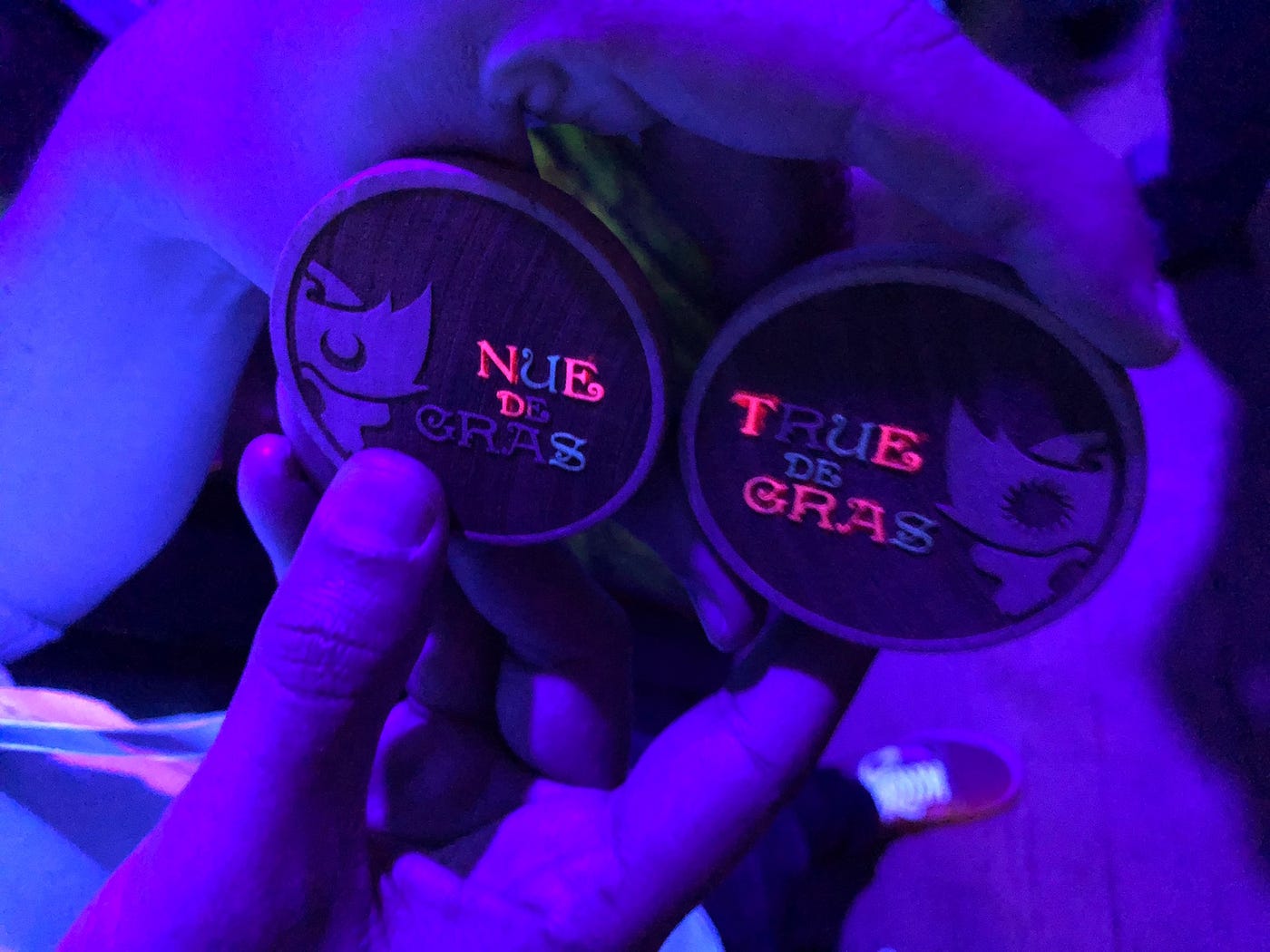
The Overlook Immersive Game — Last year’s all-consuming alternate reality game (ARG) permeated through every layer of the Overlook Film Festival, held at the Timberline Lodge in Oregon –the very hotel where Stanley Kubrick shot the exteriors for The Shining. Players praised the unparalleled paranoia and immersion into another world of horror and were eager to take part in a similar adventure in New Orleans this year. But the festival is not eager to repeat itself and hired new designers Scott Gillies and Nick Tierce to helm this incarnation of the immersive game with clear instructions to make the experience more accessible and less time consuming, allowing attendees to actually see films and other works instead of having their entire weekend taken over by one piece of entertainment. The intent was to bring “new flavor” and “take advantage of city,” according to Tierce, allowing for “initial discovery for players, but anyone can jump in at any time.”
Nick Tierce: “One of our goals was to make it fairly accessible and try to bring people in every moment we could, have multiple rabbit holes, and tell people things on social media. But also figure out what the medium was. The city’s the medium, but then you also have the festival itself, the schedule of the festival, what other things are going on in the festival, the other immersives, not stepping on anyone’s toes, making it so people are able to play other games, make it so they can see movies. Looking at that and see these are what we have to play with, how do we mix all that together to also tell our story, play our game, and make players have this experience that is something they love and cherish.”
Sadly, due to overwhelming budgetary restrictions and logistical challenges (including some actor issues), this year’s ARG ended up playing out more as a scavenger hunt and less of a mystery. Participants were sent walking from one corner of the French Quarter to the other — repeatedly — in search of clues that ultimately led nowhere, with shallow character interactions to be found throughout. Instagram posts from one of the characters caught everyone up multiple times a day, pointing to the next step, leaving players feeling like their time was being wasted in trying to “solve” anything. In short, by trying to make this game accessible to everyone, it found an audience in no one.
Get Ricky Brigante’s stories in your inbox
Join Medium for free to get updates from this writer.
SubscribeSubscribe
The new approach was considered to be an “experiment” this year, one likely not to be followed up on as the festival turns to new ideas and new designers each year.

Infinitely Dinner Society — Following her widely praised experience called The Chalet at last year’s Overlook, immersive artist Annie Lesser arrived to New Orleans with a bit of an experiment on her own, translating her popular Infinitely Dinner Society from a distinctly un-horror experience in Los Angeles to make it fit in with the feeling of the festival. Approaching a masked stranger on a street corner of the French Quarter and taken silently by hand into a nearby barricaded alley, participants found themselves amidst a rather surreal experience that included a literal handful of frozen Bananas Foster, a display of what could loosely be called modern dance (or perhaps as one participant said: awkward yoga), and an earful of esoteric ramblings about life.
The idea is interesting and its design was commendable but the execution fell short, to some extent by no fault of Lesser’s. The audio was hard to hear (impossible for some participants) due to faulty wireless headphones. The Bananas Foster was frozen solid and, due to strong winds in the alley, the sugar cube that topped it would not ignite, thus never allowing the dessert to be properly prepared, nor consumed. The significant challenges of mounting a show in another city without knowing what level of resources or assistance would be available definitely showed.
Annie Lesser: “Infinitely Dinner Society in and of itself is supposed to be detached somewhat from emotion and be focused on intellectualizing things. I want it to be a deconstruction. […] I’m not trying to make you feel anything with it. It’s supposed to be about what you take away from it. It’s an experiment, like everything I do.”
VIRTUAL REALITY
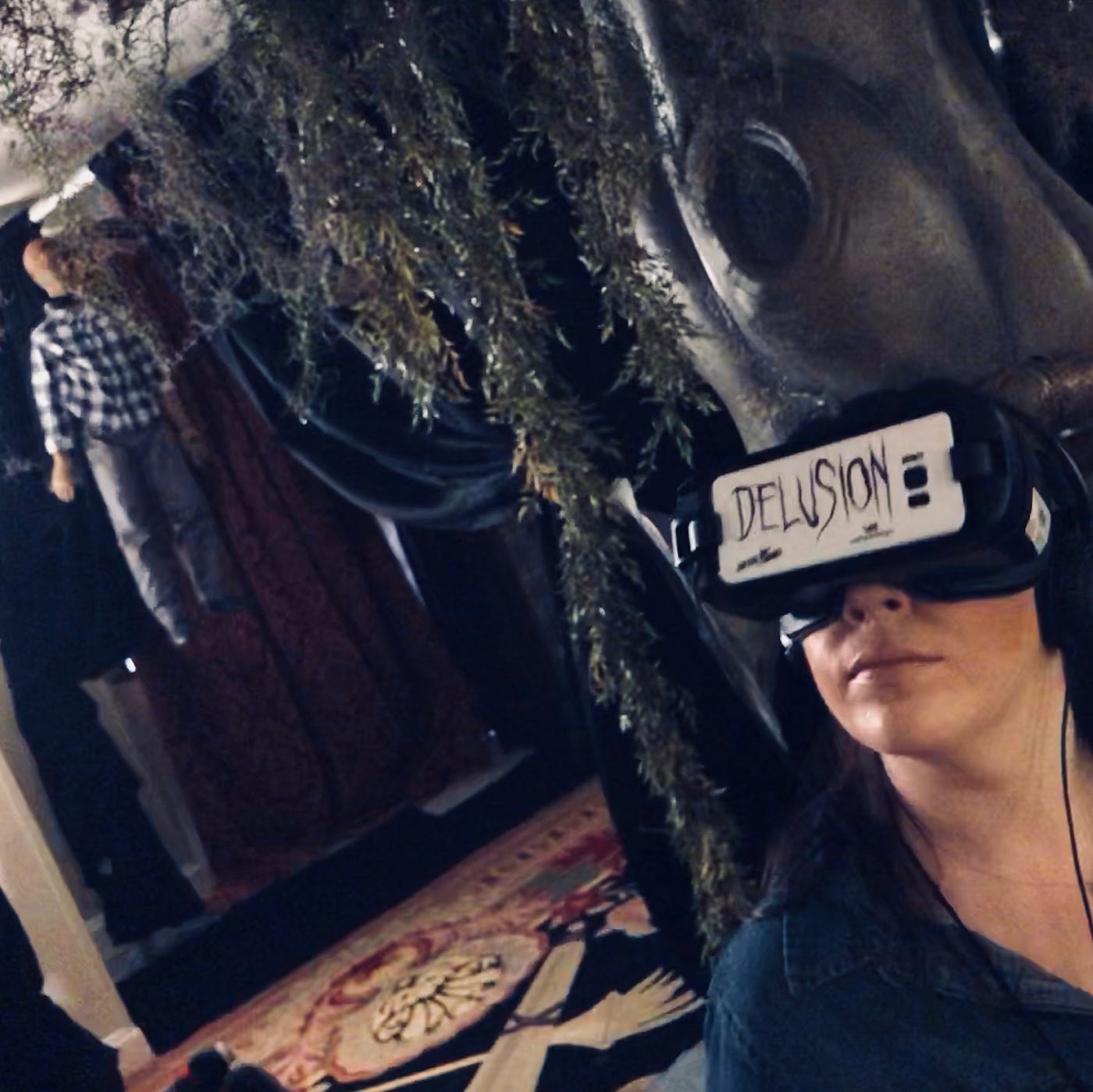
Delusion: A Cinematic VR Series — Director Jon Braver has successfully translated the fun and frights of his popular Delusion haunted play into virtual reality form. Unexpectedly, all the action within this new VR series is not aimed directly at the camera / viewer. Instead, this is true cinema, a virtual reality movie in which you simply watch and do not have a role. You’re a “ghost” as Braver puts it, following along with a supernatural adventure. Fans of the Delusion live show will no doubt find this jarring at first, but within minutes it becomes quite enjoyable to simply sit back and watch the familiar freakish scenes play out from 2014’s “Delusion: Lies Within” in full 360-degree glory.
In partnership with Skybound Entertainment, Braver has created an enjoyable, suspenseful, (and completely watchable) virtual reality film that’s actually fun to look around. With so much detail in the sets and so many bizarre and interesting characters in each scene, the movie really draws the viewer in, eager to find out what happens next. Using cable cameras and a rig of 5 Sony a7S cameras, Braver shot the film on location at the original residence where “Lies Within” took place four years ago, using some of the same cast to bring it to life once again. The film was in post production for 13 months, according to Braver, carefully stitching each live-action frame together and plating out the lighting rigs needed for the shoots. What results is a perfect blend between theater and film that unfolds over four chapters in season one (all of which were shown at Overlook) and six chapters in season two to conclude the story, which has yet to be filmed.
Jon Braver: “I treated it very much like the play, like theater. We’d do heavy blocking. We had set pieces in certain places that are on a stitch line so actors knew they couldn’t sit there and do their dialogue. A lot of blocking, a lot of rehearsal. We had some rules we were told that you should have it at a certain height to make people feel comfortable. […] But we were breaking a lot of these rules, that weren’t really rules, on the fly.”
As for this year’s live Delusion play, Braver hinted that it will be a time-travel adventure with an Indiana Jones feel to it, set outside a residence for the first time, allowing for a longer run. More details on that should arrive in the weeks ahead.

Wolves in the Walls — Combine the writings of Neil Gaiman and immersive choreography of Third Rail Projects and it’s hard not to produce an excellent work. This virtual reality piece is sweet and innocent with just a touch of horror as it tells the story of eight-year-old Lucy that suspects wolves live in the walls of her family’s home. Her goal is to get you to make the same discovery in a free-roaming, interactive presentation that only VR could achieve. The visuals are stunningly artistic and detailed, even up close. And in merely chapter 1, participants are handed a virtual flashlight, a virtual instant camera, and a virtual pen, all of which are fun and intuitive to engage with.
The only negative of this experience is when the setting really opens up to a vast space, participants instantly feel the desire to explore — but are instantly tethered (figuratively and literally) by technology, able to roam only in a small box.
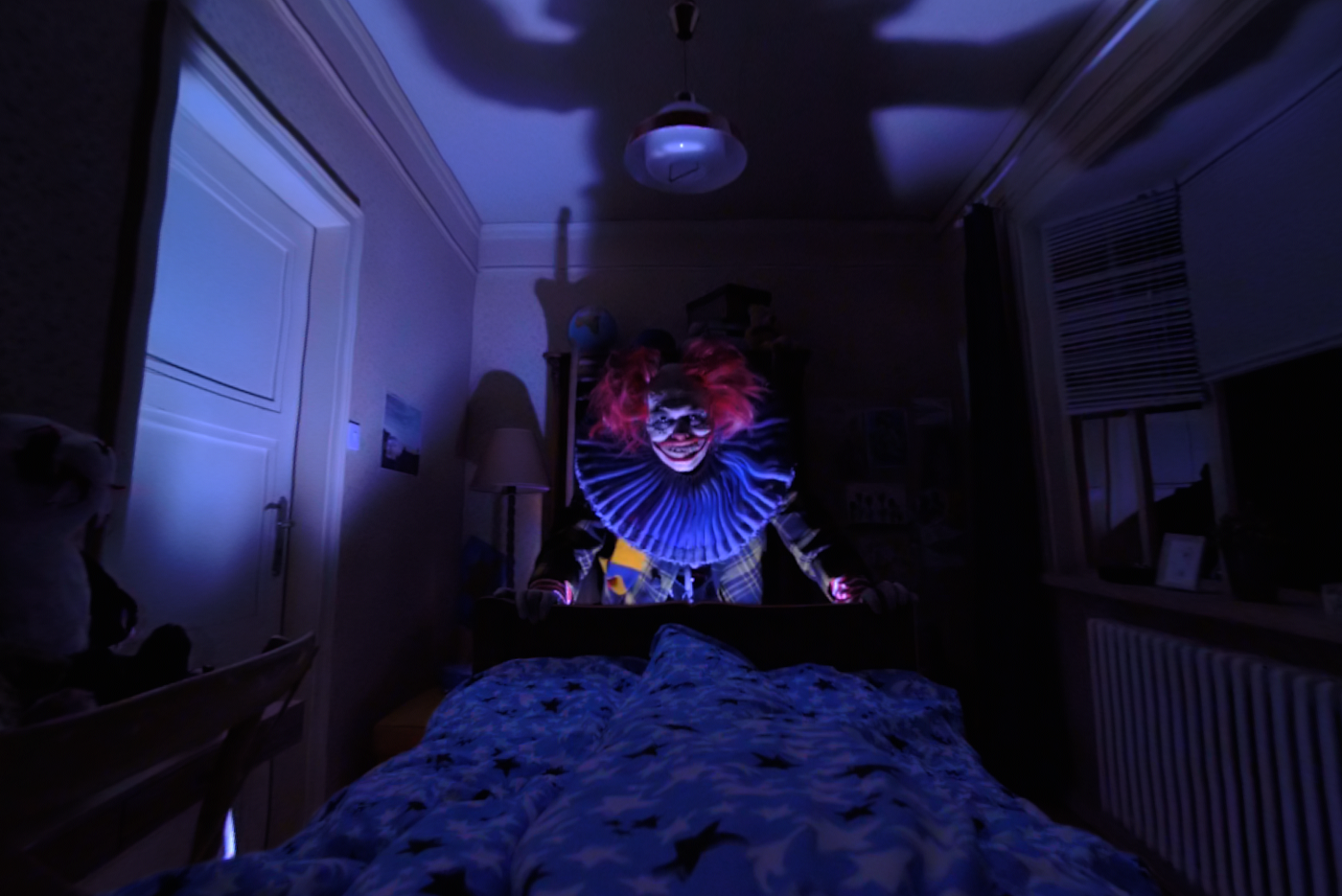
Night Night / Campfire Creepers — For every bit of originality and inventiveness the Delusion VR series has, this pair of short VR films from Dark Corner completely lacks. These two shorts are mildly amusing and predictable at best… and dizzying and dull at worst. Night Night features every “killer clown” trope imaginable, borrowing a bit too much from The Babadook as well. Campfire Creepers never even gets that far, instantly surrounding viewers with poorly-executed shots of children roasting marshmallows that leaves much to be desired.
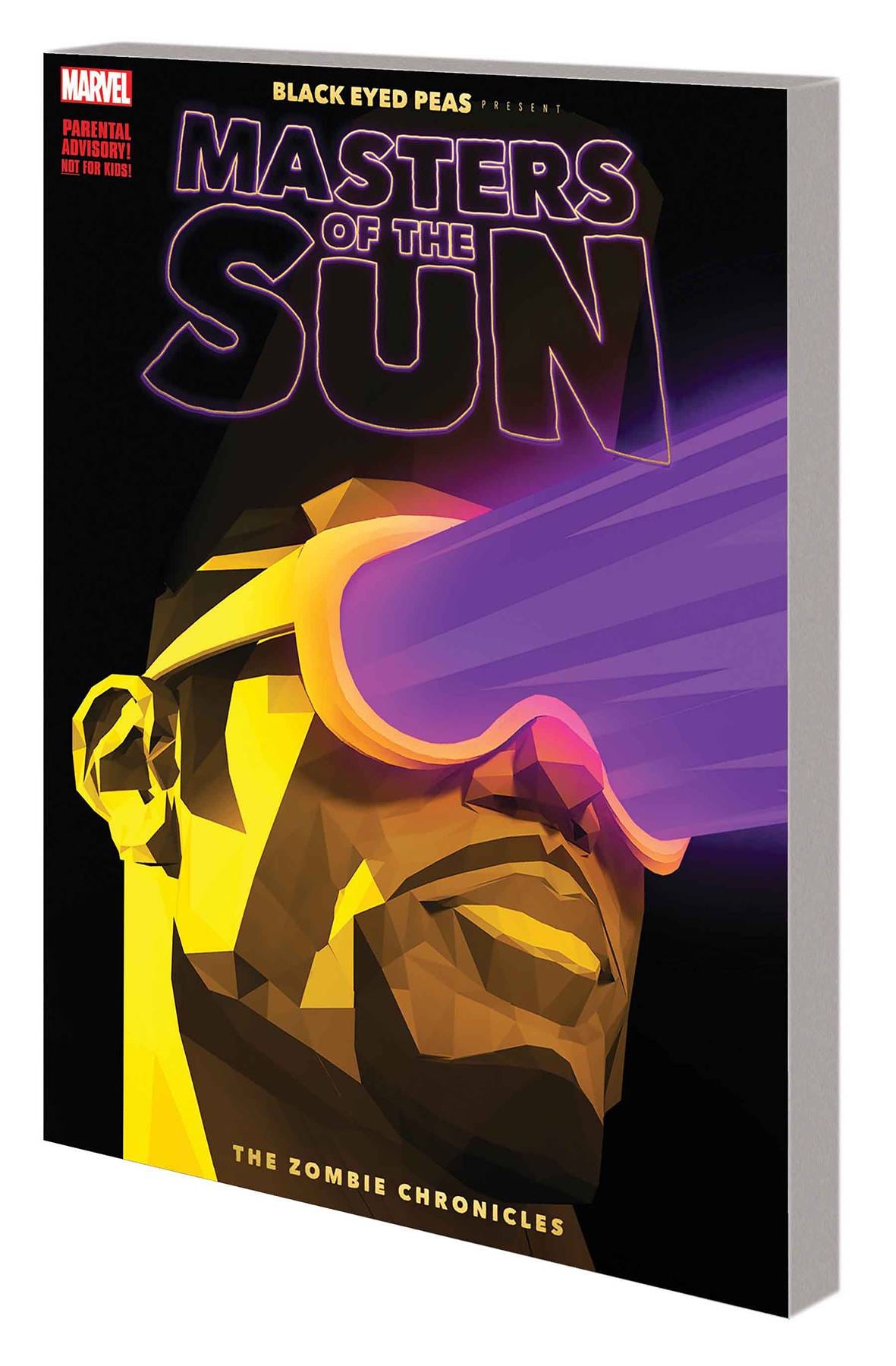
Masters of the Sun — This collaboration between Marvel and will.i.am / Black Eyed Peas is a unique spin on digital comics, translating them into virtual reality form by way of a superheros-meet-zombies story. Playfully narrated by none other than Stan Lee, the premise and vibe of this VR experience are intriguing and original, but the actual interactivity is clunky and often gets in the way of enjoying the story. Viewers look in the direction of thought bubbles and objects to advance the story, as if turning a page in a comic. But the mechanic doesn’t translate well and ultimately leaves the whole experience feeling choppy.
The Overlook Film Festival is unofficially said to be returning to New Orleans in 2019, bringing an even bigger selection of immersive entertainment.
Keep checking back to No Proscenium this week for more Overlook 2018 coverage, including video interviews with many creators of its immersive offerings.
No Proscenium is a labor of love made possible by our generous Patreon backers: join them today!
In addition to the No Proscenium web site, our podcast, and our newsletters, you can find NoPro on Twitter, Facebook, YouTube, Instagram, in our Facebook community Everything Immersive, and on our Slack forum.




















Discussion